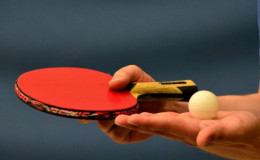
- Sailing is a sport played in seas with the help of wind.
- The art of controlling a boat with large foils called sails.
- By changing the rigging, rudder, and sometimes the keel or centre board, a sailor manages the force of the wind on the sails in order to change the direction and speed of a boat.
Rules
- Boats on a port tack shall give way to boats on starboard tack .
- When boats are on the same tack and overlapped, the boat to windward (the boat closest to the wind) shall keep clear of a leeward boat.
- When boats are on the same tack and not overlapped, the boat that is astern shall keep clear of the boat ahead.
- When a boat is tacking (changing tack) it shall keep clear of boats that are not tacking.
Kinds of boats used
- Dinghies
- Windsurfers
- Multi hulls
- Yachts
- Kite surfing
- Radio controlled sailing boats
Race signals
- Preparatory signal
- Start signal
- Recall signal
- Course change signal
- Postponement signal
- Abandonment signal
Types of races
Harbor or buoy racing
- Harbor or buoy races are conducted in protected waters, and are quite short, usually taking anywhere from a few minutes to a few hours.
- All sorts of sailing craft are used for these races, including keel-boats of all sizes, as well as dinghies, trailer sailors, catamarans, skiffs, sailboards, and other small craft
Inshore racing
• Inshore racing is yacht racing not in protected waters but along and generally from land to nearby islands.
The duration of races maybe daylight only.
Offshore racing
- Offshore yacht races are held over long distances and in open water; such races usually last for at least a number of hours.
- Match Racing
- In match racing only two boats compete against each other. The best known competition of this type is the America's Cup.
- Three peaks yacht race
- It is a team competition involving sailing, cycling and running.
Basic sailing techniques
Trim
• This is the fore and aft balance of the boat.
• The aim is to adjust the moveable ballast (the crew) forwards or backwards to achieve an 'even keel'
Tacking and jibing
• There are two ways to change course by turning either the bow through the eye of the wind, "tacking" or the stern, "jibing."
• Tacking is the safer method and preferred especially when sailing upwind.
Reducing sail
• An important safety aspect of sailing is to adjust the amount of sail to suit the wind conditions.
• As the wind speed increases the crew should progressively reduce the amount of sail.
Sail trimming
The most basic control of the sail consists of setting its angle relative to the wind. The control line that accomplishes this is called a "sheet
Hull trim
Hull trim is the adjustment of a boat's loading so as to change its fore-and-aft attitude in the water..
Heeling
When a ship or boat leans over to one side under wind pressure, from the action of waves or from the centrifugal force of a turn, it is said to 'heel'.
Major Championships
- Olympics
- Youth Sailing World Championship
- Team Racing World Championship
- Offshore Team Racing World Championship
- Women's Match World Championship
- Open Match Racing World Championship
Race Officials
- International Judge
- International Measurer
- International Race Officer
- International Umpire
Governing body:
• The International Sailing Federation










